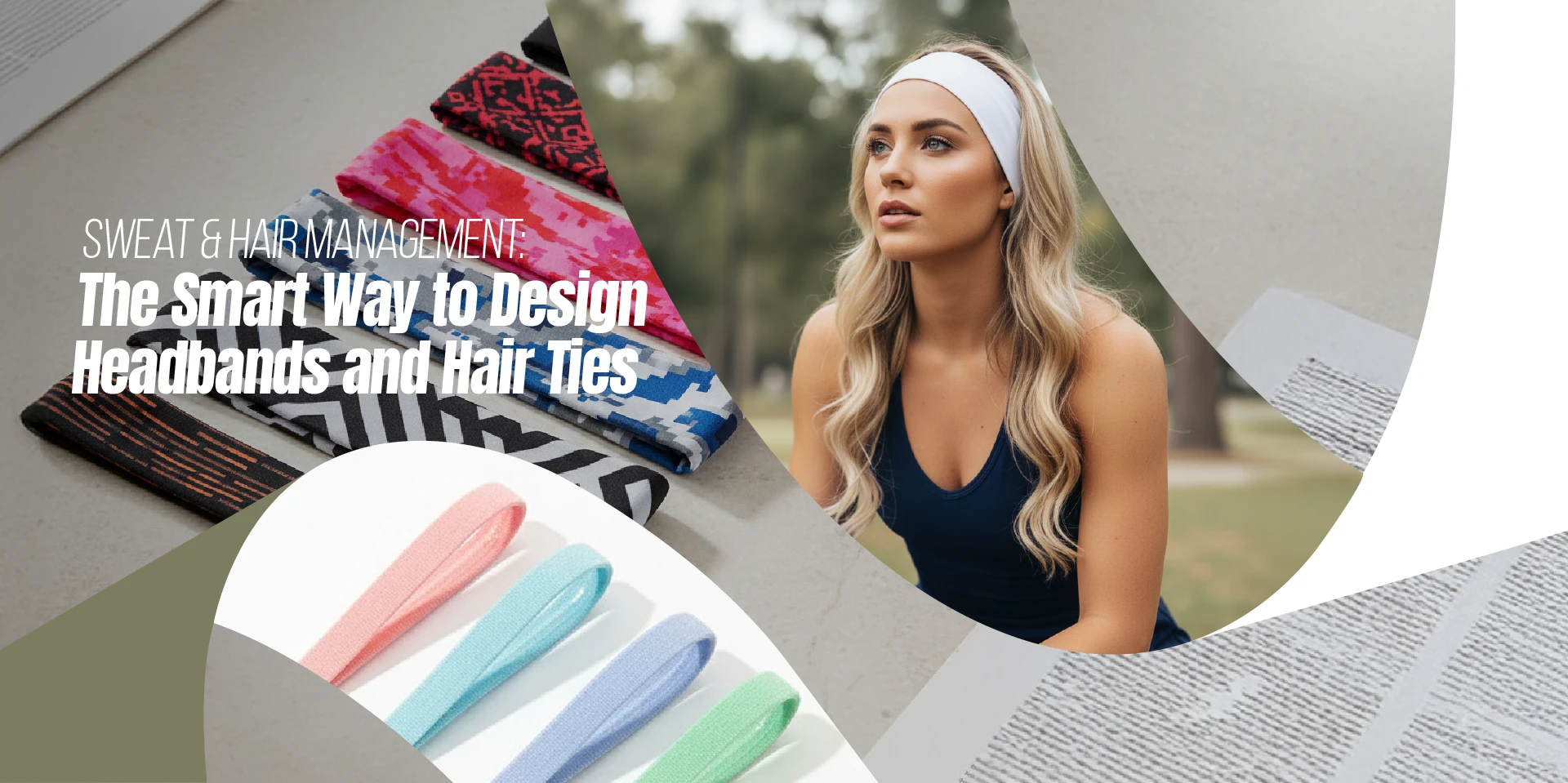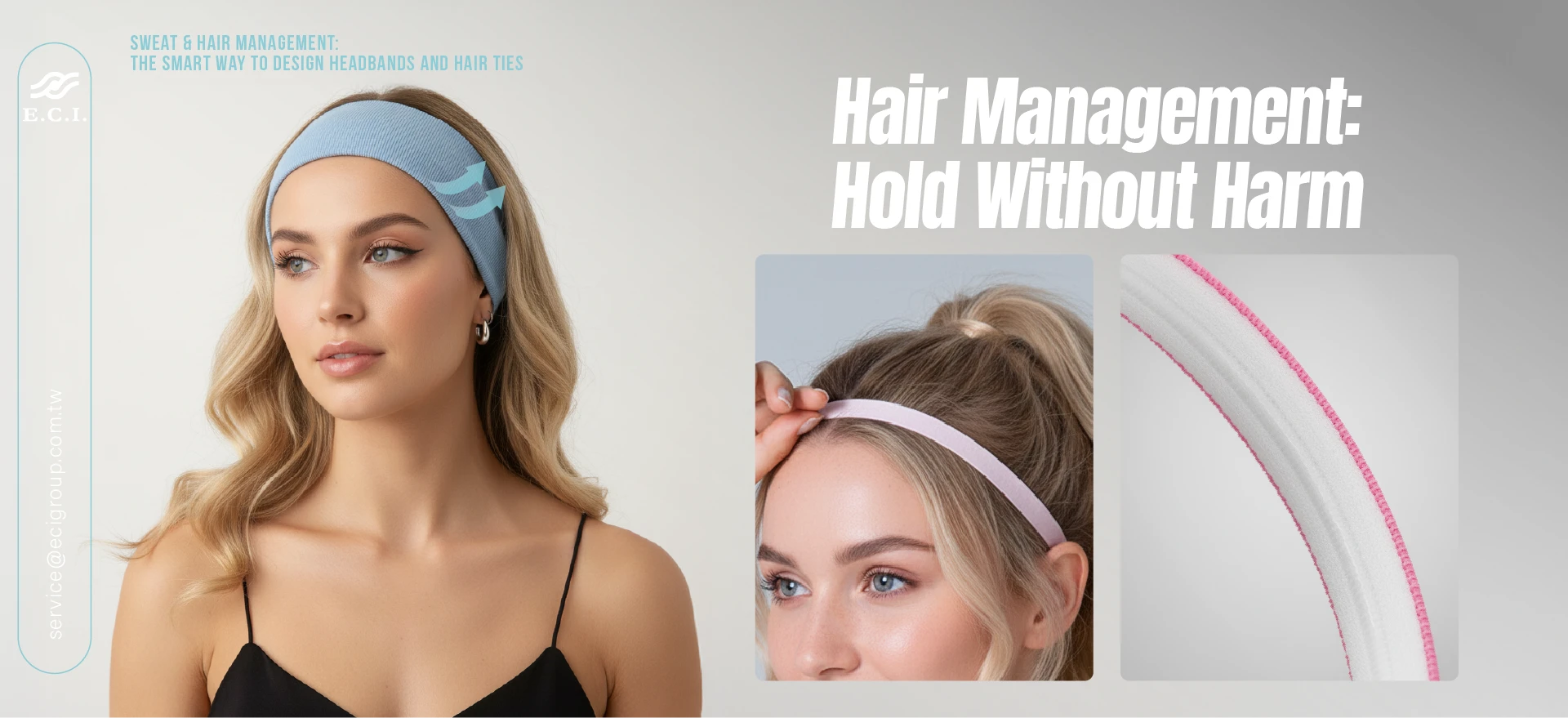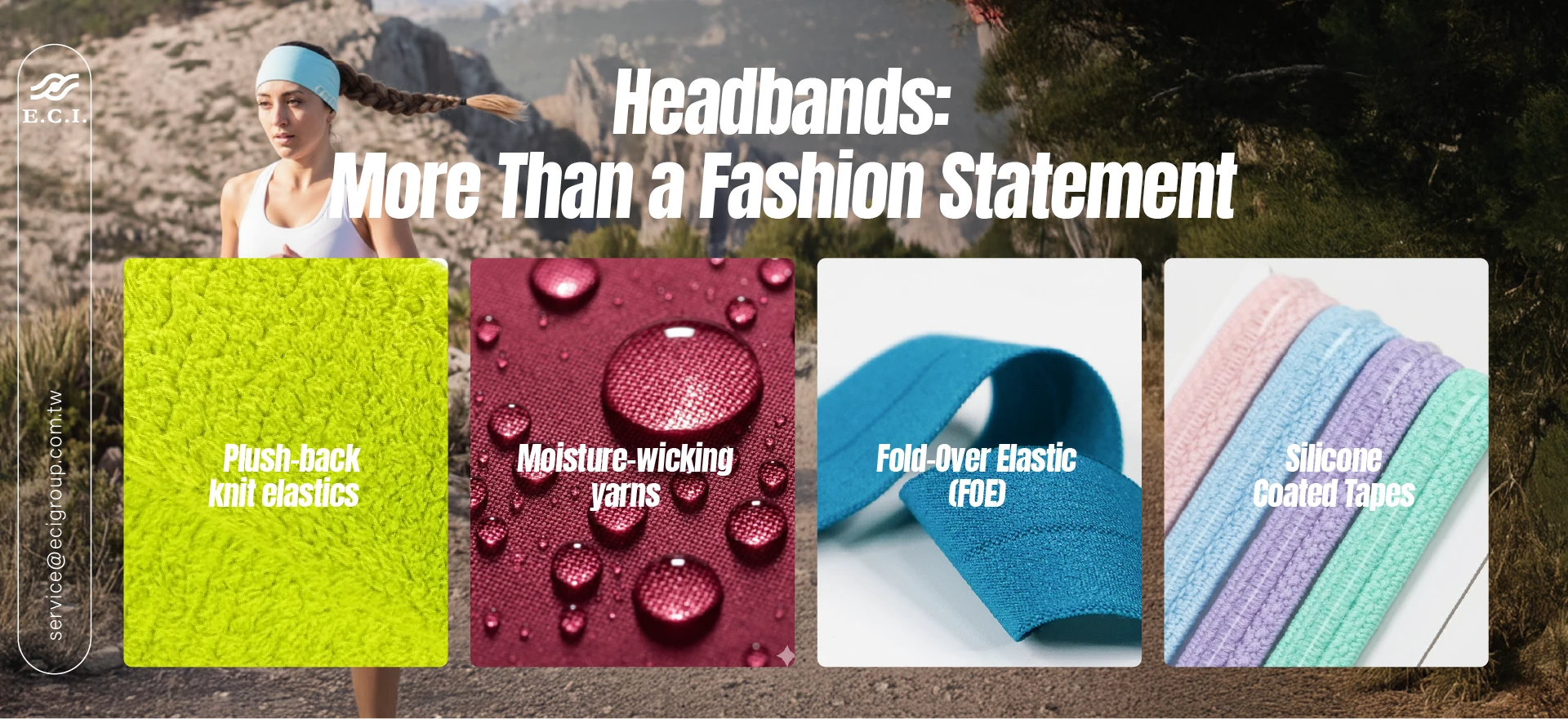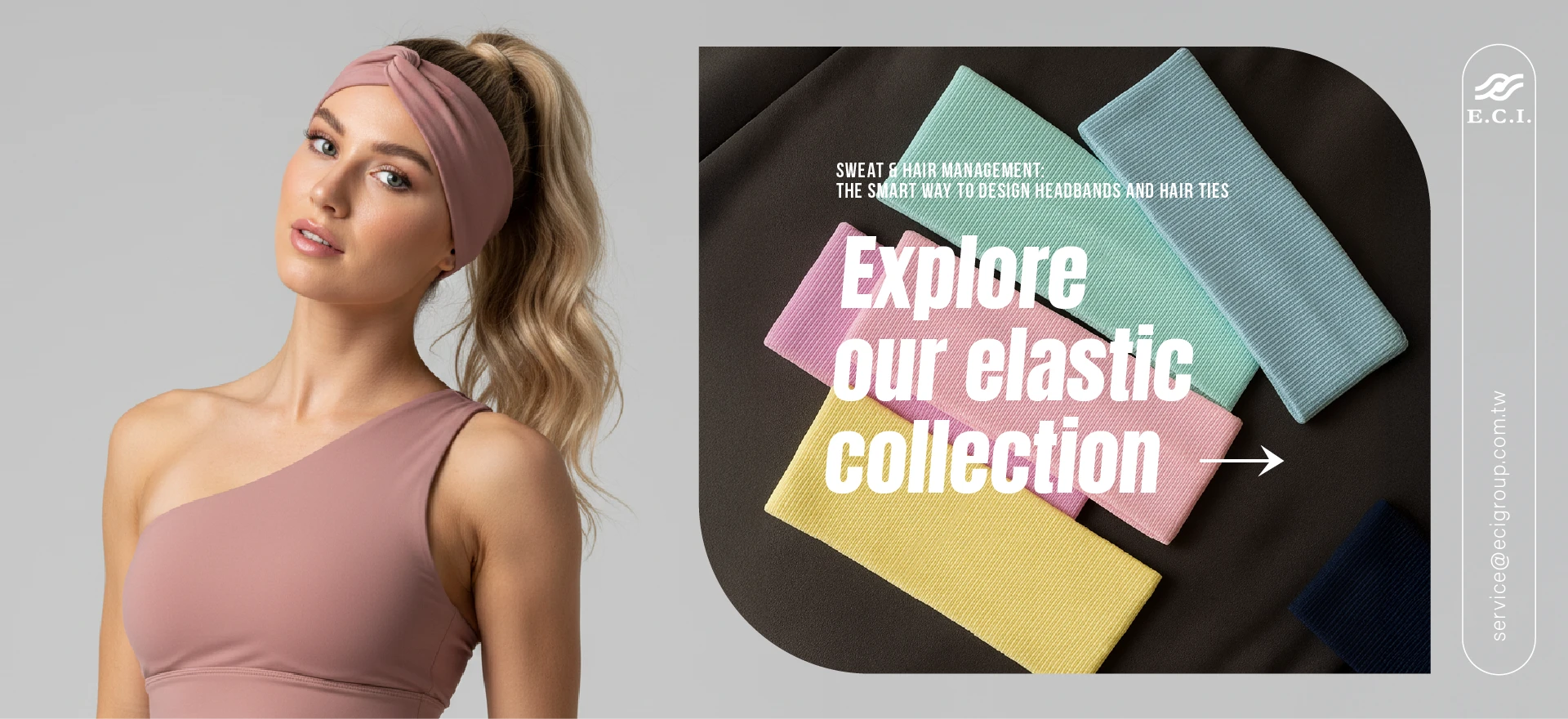Sweat & Hair Management: The Smart Way to Design Headbands and Hair Ties

Ask any runner squinting through stinging sweat, or a cyclist battling helmet slippage mid-ride, and they’ll tell you: a good headband or hair tie can make or break the experience.
But there’s more science here than most people realize. For brands and product developers, sweat and hair management is not just about fashion—it’s about function, materials, and smart use of narrow fabrics like elastic tapes, fold-over elastics, and silicone coated anti-slippery trims.
In this guide, we’ll explore how sweat and hair actually behave, what that means for consumers, and how apparel brands and purchasing teams can spec better products by working with the right suppliers.
Why Sweat Management Matters
Sweat is the body’s natural cooling mechanism, but depending on intensity and climate, athletes can lose 0.5 to 2.0 liters of fluid per hour. Once sweat outpaces evaporation, it drips—into the eyes, onto hands, and down the neck.
That’s where headbands and helmet liners step in. The best designs don’t just absorb—they wick (move liquid away from skin), spread (increase evaporation area), and dry quickly. When these three work together, sweat is managed efficiently instead of becoming a performance liability.
For consumers, this translates into comfort. For designers and developers, it means specifying narrow fabrics engineered to balance absorbency, wicking, and stretch.
Hair Management: Hold Without Harm
Hair presents a parallel challenge. Tying it back securely is essential, but too much tension or friction leads to breakage and traction alopecia.
The solution? Wider, fabric-covered elastics, fold-over elastics, and scrunchie-style designs that distribute pressure and minimize damage. For higher-impact activities, products can integrate silicone coated tape for anti-slippery grip—a detail that keeps bands and ties in place without overtightening.

Headbands: More Than a Fashion Statement
Once a retro accessory, headbands are now central to sportswear and athleisure. Market data shows rising demand not just for looks but performance headbands that keep sweat out of eyes, stay put during HIIT, and wash easily.
From a supply chain perspective, the challenge is building headbands that balance comfort, function, and durability. That means:
- Plush-back knit elastics for skin comfort
- Moisture-wicking yarns integrated into narrow fabrics
- Fold-over elastics (FOE) for soft, neat edges
- Silicone coated tapes strategically patterned for anti-slip performance
For brands, this isn’t just a design decision—it’s a sourcing one. Choosing the right headband supplier or silicone coated tape supplier can be the difference between a product that delights customers and one that generates complaints.

Inside the Materials: The Narrow Fabric Playbook
ECI Elastic, a long-standing narrow fabrics supplier serving leading activewear and outdoor brands, highlights four key material directions:
- Knit Elastic with Plush Back – Perfect for headbands and helmet liners, combining stretch with soft skin contact.
- Woven Elastic – Stable and precise, ideal for slim headbands or straps that must hold shape.
- Fold-Over Elastic (FOE) – Used to bind edges neatly while maintaining stretch; excellent for both consumer comfort and brand aesthetics.
- Silicone Coated Elastic Tape – Provides anti-slippery properties, ensuring bands and ties stay in place even during high sweat output.
By blending hydrophilic yarns, channel structures, and controlled modulus, suppliers can fine-tune absorbency, wick rate, and recovery to match exact use cases.
Testing That Proves Performance
For buyers and developers, lab data is critical. Look for suppliers who validate with:
- ISO 105-E04 (Colorfastness to Perspiration) – prevents dye from bleeding onto skin and hair.
- AATCC 100 (Antimicrobial Finishes) – optional but important for odor control.
- AATCC 135 (Dimensional Stability to Home Laundering) – ensures garments maintain their fit and shape after washing.
This testing backbone gives brands confidence that their headbands, hair ties, and elastics won’t fail in real-world use.

For Brands: The Supplier Question
Performance trims aren’t commodities—they’re engineered. When sourcing headbands or silicone coated tape for anti-slippery applications, brands should evaluate suppliers on:
- Vertical integration – controlling yarn, weaving/knitting, dyeing, and finishing ensures faster lead times and consistent quality.
- Sustainability – look for bio-based yarns, recycled polyester, or production with lower water and energy use.
- Customization – the ability to adjust modulus, elongation, or grip pattern to meet your exact spec.
- Certifications – OEKO-TEX®, GRS, Higg FEM, and SLCP audits support compliance.
ECI Elastic, for example, works with both boutique and global brands to design elastics tailored to specific performance demands—whether that’s a lightweight yoga headband or a rugged anti-slip liner for outdoor helmets.
The Business Case for Getting It Right
Consumers are unforgiving: a headband that slips, a hair tie that breaks hair, or dye that stains during a sweaty run can tank reviews and erode brand loyalty.
On the other hand, a well-engineered narrow fabric trim can quietly build loyalty. When headbands stay put through marathons and elastics remain comfortable after dozens of washes, customers notice—even if they don’t consciously know why.
For brands, investing in better sweat and hair management solutions pays back in fewer returns, stronger word-of-mouth, and a reputation for quality.
Final Word
Whether you’re a runner shopping for your next headband or a product developer specifying trims for a global brand, one principle holds: sweat and hair management is all about the details.
And in those details—plush-back knits, fold-over elastics, silicone coated tapes—you’ll find the quiet innovations that elevate everyday products into essentials.
For brands looking to partner with a headband supplier or a silicone coated tape supplier, the key is finding one that blends performance, sustainability, and customization. Because in today’s market, it’s not enough for a product to look good—it needs to work better.



